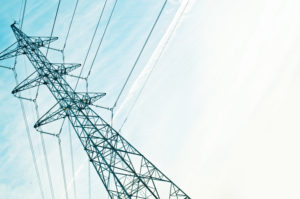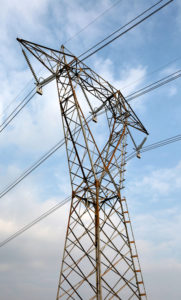As the Federal Energy Regulatory Commission ("FERC") solicits comments regarding fundamental changes to its regulation of the country's electricity transmission systems; and as the temperature rises in New York State regarding transmission system upgrades needed to accommodate the enormous required influx of renewable electricity both from offshore wind and from upstate sources to downstate need; and after the Legislature required in the spring of 2020 that the New York State Public Service Commission (PSC) order the State's regulated utilities to reimagine the state's transmission system, on September 9, 2021 the PSC sent the utilities back to the drawing board, rejecting their proposals to identify projects on their systems that will unbottle the resources needed to achieve the State's Climate Leadership and Community Protection Act (CLCPA) mandates that 70% of its electricity be from renewable energy by 2030 and that 100% be emissions-free by 2040.
Although the utilities proposed to invest billions in large-scale transmission and distribution projects designed to ease constraints on renewables, the PSC said the proposals did not provide sufficient transparency into the utilities' investment criteria, did not provide sufficient opportunities for stakeholder engagement in the planning process, and the PSC questioned the underlying Benefit Cost Analysis (BCA) used by the utilities. Before the PSC will approve the proposed upgrades needed to meet the CLCPA mandates, the PSC ordered the utilities to work with relevant state agencies, the state system operator, and stakeholders to redesign their planning processes.

The utilities' proposals arise out of the 2020 Accelerated Renewable Energy Growth and Community Benefit Act, which required that the PSC and utilities plan for the electric transmission infrastructure that is necessary to meet the clean energy and climate goals set forth in the CLCPA. In May 2020, shortly after the Act was passed, the PSC issued an implementing order that directed the State's jurisdictional utilities to file criteria for evaluating, funding, and prioritizing the local transmission and distribution investments needed to meet the CLCPA objectives and to conduct a study of their local systems to identify potential upgrades. In November 2020, the utilities proposed local transmission and distribution upgrades in two phases – Phase 1 and Phase 2 – based on project readiness and the complexity of remaining regulatory issues. In Phase 2, where projects are driven primarily by the need to achieve CLCPA targets and are not currently accounted for in the utilities' capital plans, the utilities proposed to evaluate a potential upgrade investment in light of six criteria, specifically (i) the role of local transmission infrastructure as the bridge between bulk power transmission facilities and the distribution system; (ii) the timeline for implementing the CLCPA mandates; (iii) a project's ability to be expanded to accommodate additional renewable energy development; (iv) cost effectiveness; (v) a project's contribution to grid flexibility; and, (vi) the likelihood of renewable generation interconnecting in a given area of the utility's territory.
Last week, the PSC declined to fully review or approve any of the utilities' proposed Phase 2 projects primarily due to significant concerns over the BCA utilized by the utilities to support their proposals. The PSC noted that the utilities' approach fell short of what is needed and expressed skepticism that the utilities' proposals accurately estimated the relevant benefits and alternatives:
The purpose of the BCA is to guide the [u]tilities toward the most cost-effective expenditure of ratepayer dollars to meet the CLCPA mandates. The [u]tilities' proposal is not properly tailored to satisfy this objective. The Commission is concerned with whether the proposed BCA provides an accurate estimate of the relevant benefits and considers an adequate scope of alternatives.
Drawing on public comments from Potomac Economics and the New York Battery and Energy Storage Technology consortium (NY-BEST), the PSC pointed to a number of deficiencies in the BCA methodology, including reliance on hypothetical buildouts of renewable energy facilities that would likely never be built, failure to use location-based marginal price estimates specific to when and where renewable curtailment would be relieved, and failure to evaluate energy storage, alternative generating siting, competitive transmission investment, and demand-side solutions as potential alternatives. To address these shortcomings, the PSC ordered the utilities to revise and resubmit the proposed BCA for Phase 2 upgrades only after consultation with Department of Public Service (DPS) Staff.
When Phase 2 upgrades are proposed, the [u]tilities must be able to demonstrate both that the upgrades are the least cost or highest value options as compared to advanced technology solutions and other potentially viable alternatives.
The PSC also stated that it expects the utilities to develop new coordinated planning procedures in collaboration with stakeholders – another area where the utilities' proposals fell short. The utilities did not propose major changes to enhance their stakeholder engagement initiatives, but instead proposed holding additional stakeholder briefing sessions. The PSC said this was merely an information dissemination proposal, not an opportunity for stakeholders to provide recommendations and input in the planning process.

While the first full round of in-depth Phase 2 proposals are now not expected until January 1, 2023 – even while buildout of renewable generation sources that often depend upon thoughtful and planned transmission system upgrades continues apace – the revised BCA is due to be submitted to the PSC by the utilities by December 8, 2021. In March 23, 2021 comments on the utilities' proposals, the Alliance for Clean Energy – New York (ACE-NY), the New York Offshore Wind Alliance, the American Clean Power Association, and the Advanced Energy Economy Institute urged the PSC to approve Phase 2 upgrades in priority areas of the utilities' service territories by the end of 2021, to continue the accelerated transmission planning process required by state law. In comments signed by Anne Reynolds, Executive Director of ACE-NY, the industry group stated, "It is critical that the Commission identify the most cost-effective CLCPA-driven transmission projects to address local system needs." But, alas, it appears renewable energy developers and the State's ratepayers will have to wait a while longer for a clear understanding of the path forward for these essential transmission upgrades.
To view Foley Hoag's Energy & Cleantech Counsel blog please click here
The content of this article is intended to provide a general guide to the subject matter. Specialist advice should be sought about your specific circumstances.

